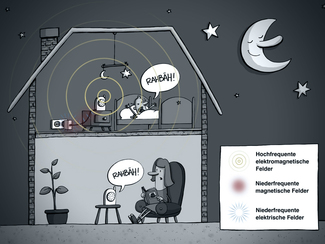-
Topics
subnavigation
Topics
Electromagnetic fields
- What are electromagnetic fields?
- Static and low-frequency fields
- Radiation protection relating to the expansion of the national grid
- High-frequency fields
- Radiation protection in mobile communication
Optical radiation
Ionising radiation
- What is ionising radiation?
- Radioactivity in the environment
- Applications in medicine
- Applications in daily life and in technology
- Effects
- What are the effects of radiation?
- Effects of selected radioactive materials
- Consequences of a radiation accident
- Cancer and leukaemia
- Genetic radiation effects
- Individual radiosensitivity
- Epidemiology of radiation-induced diseases
- Ionising radiation: positive effects?
- Risk estimation and assessment
- Radiation protection
- Nuclear accident management
- Service offers
-
The BfS
subnavigation
The BfS
- About us
- Science and research
- Laws and regulations
- BfS Topics in the Bundestag
- Links
High frequency fields
High frequency electromagnetic fields cover the frequency range from 100 kHz to 300 GHz of the electromagnetic spectrum. In general they are distributed by an antenna. They are able to distribute energy and information over a great distance.
Because high frequency electromagnetic fields are used for multiple purposes (e. g. radio and TV broadcast, mobile communication, cordless phones, wireless LAN and bluetooth connections) we are surrounded by a large number of different emitting facilities operating at various transmitting powers and frequencies.




